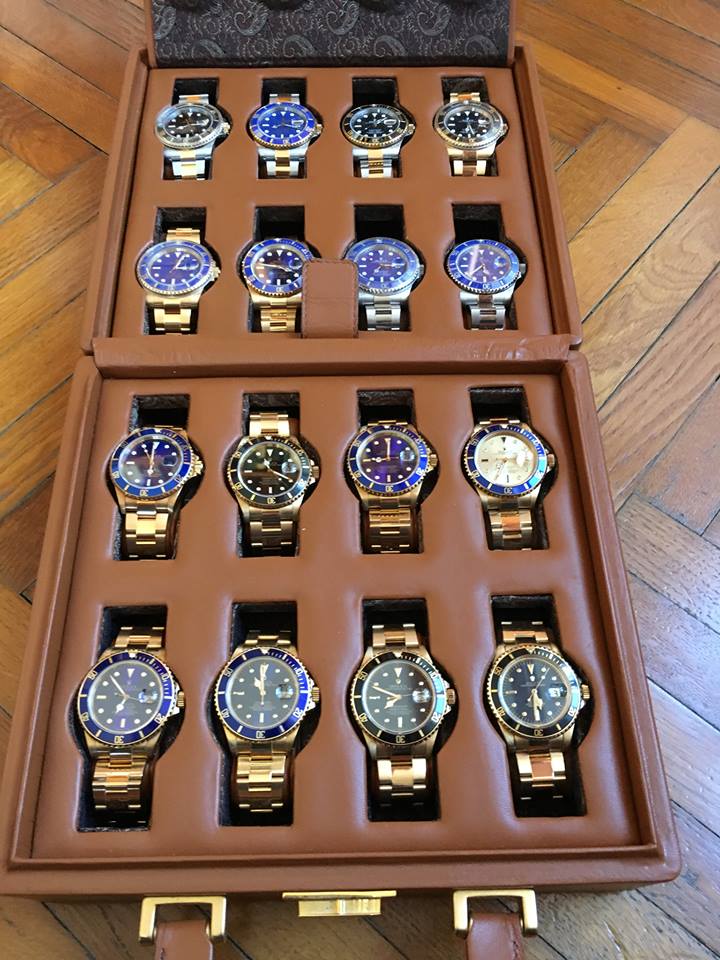Rolex is one of the world's largest brands of luxury replica watches. Rolex was founded in 1905 in London by Hans Wilsdorf, eventually Rolex moved to Switzerland in 1919. The Tudor watch brand is a subsidiary of Rolex. In 1914, Rolex obtained a chronometer certificate (Class A precision certificate) and thus became the first manufacturer of a chronometer watch.

Rolex replica used the same steel as everyone else, but around 2003 they moved their entire steel production to 904L steel. In 1988 they released their first 904L steel watch with a few versions of the Sea-Dweller. 904L steel is more rust- and corrosion-resistant and is slightly more difficult than other types of steel. The most important thing for Rolex is that 904L steel, when working well, is able to take (and retain) polishes incredibly well. If you've ever noticed that steel on a Rolex watch looks different from other watches, it's because of 904L steel and how Rolex learned to work with it.
Although these replica rolex watches are undoubtedly beautiful, because they are functional, it is not unreasonable to ask 'what makes them so special?'
Let's take a closer look at one of the most luxurious watches in the world. For starters, think of a Rolex replica watch as an investment. This piece of Swiss technology lasts a whole lifetime, and it can even become a family heirloom. Because the watches are highly regarded, they will also be preserved over the years (and even win often).
To start answering our question, one must take into account the intricate design of a Rolex watch. First, these watches contain many unique features, and each wristwatch takes about a year to make (sometimes even longer). Interestingly, almost every part of the watch is made in-house at one of Rolex's four state-of-the-art production locations across beautiful Switzerland. Internal quality control is more than strict; the watches do not leave the factory unless they are absolutely perfect. Up to now, we have succeeded in maintaining their impeccable image for more than a century.
Each Rolex replica watch also undergoes an extremely demanding process, which requires careful assembly, minimal adjustments and positioning of the oscillator to ensure the absolute accuracy of the watch. After this process, each fake Rolex becomes a certified Swiss chronometer - a title that can not be claimed by any watchmaker.
To achieve a stopwatch certification, the movement must not only be made of the best quality components, but must also be specially guarded during the installation by the best watchmakers and timers. Fun fact: the fine regulation and chronometer properties of a watch can be destroyed in seconds by a rough or inexperienced hand.
That is not all; each watch is then individually tested for two weeks at 5 positions and at three different temperatures. The measurements are carried out daily using special cameras. After the statistics are collected, seven criteria are calculated - the watch must then meet the (rather high) minimum of everything to receive the certification. To give you an idea of the luxury status of this certification, only 3% of Swiss high quality watches are of this honor every year.
When you compare watches that produce Rolex replicas with brands like Omega and Tag Heuer replica, you get a lot more eye for the money you pay. The quality, the craftsmanship and, very importantly, how much value it has on the resale market. Rolex is able to competitively price their watches compared to other luxury brands because of economies of scale.
Rolex really is not like any other watch brand. In fact, the unlisted, independently managed entity is not like most other companies. I can now say this with much more clarity than most people because I was there. Rolex seldom allows anyone in his sacred halls, but I was invited to visit their four production sites in Switzerland and experience how Rolex makes his famous watches.